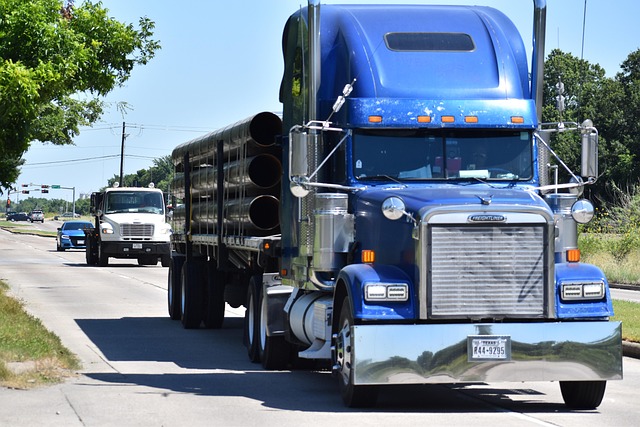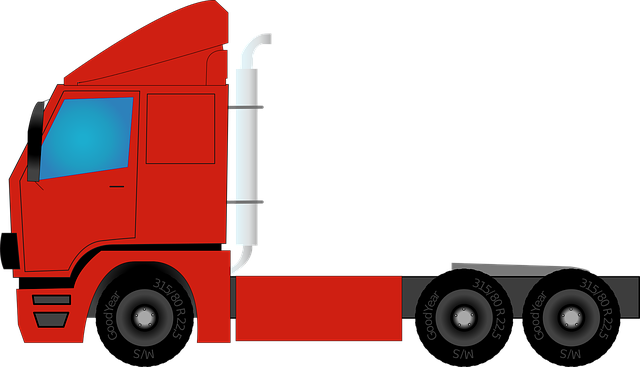Looking to register your car in California? This comprehensive guide walks you through every step, from understanding key requirements to completing the application process. We’ll show you how to gather essential documents, verify your vehicle’s VIN using online tools for accuracy, and pay registration fees. By following these clear instructions, you’ll be on your way to securing your California vehicle registration smoothly and efficiently, ensuring a seamless experience with minimal hassle. Additionally, discover the importance of a reliable VIN verifier in maintaining your car’s records accurately.
- Understand California Vehicle Registration Requirements
- Gather Necessary Documents for Car Registration
- Verify VIN: Step-by-Step Guide Using Online Tools
- Complete the Application Process at a DMV Office
- Pay Registration Fees and Obtain Your Registration Certificate
Understand California Vehicle Registration Requirements

Before registering your car in California, it’s crucial to understand the state’s specific requirements. Every vehicle owned or operated within California must be registered with the Department of Motor Vehicles (DMV). This process involves verifying the vehicle’s identity through a meticulous VIN inspection, ensuring the vehicle meets safety and emissions standards. The unique 17-character Vehicle Identification Number (VIN) acts as a fingerprint for each car, making it an indispensable tool in the registration process.
In California, a mobile VIN verifier plays a critical role by enabling on-site VIN inspections. This innovative service allows you to get your vehicle inspected promptly and conveniently. Unlike traditional methods that might require you to visit a DMV office, a mobile vin verification service brings the inspection to you, whether at home or work, ensuring a hassle-free registration experience.
Gather Necessary Documents for Car Registration

Before you start the registration process, ensure you have all the required documents ready. The California Department of Motor Vehicles (DMV) will need several pieces of information and paperwork to complete your car’s registration. One crucial document is the Vehicle Identification Number (VIN) verifier, which can be obtained through a mobile VIN verifier or by conducting a VIN inspection. This unique 17-digit code is essential for identifying your vehicle.
Other necessary documents include proof of ownership, such as a certificate of sale or a title transfer, and valid identification like a driver’s license or state ID. Additionally, you’ll need to provide evidence of insurance and possibly pay registration fees, which can vary based on your vehicle’s type and age. Having these documents readily available will streamline the registration process at your local DMV office.
Verify VIN: Step-by-Step Guide Using Online Tools

Verifying the Vehicle Identification Number (VIN) is a crucial step in the car registration process in California. It ensures that the vehicle’s history is accurately checked, which is essential for safety and legal compliance. Thankfully, there are online tools available to make this process straightforward, even allowing for a mobile vin verification.
Here’s a simple step-by-step guide:
1. Obtain your vehicle’s VIN, typically found on the driver’s side of the dashboard or in the door jamb. You can also check under the hood if needed.
2. Utilize an online VIN verifier tool. Simply input your VIN into the platform and let it perform a comprehensive search across various databases. These tools cross-reference your VIN with industry records, providing valuable insights into the vehicle’s history, including past owners, accident reports (if any), and maintenance records.
3. Compare the information presented by the online checker with your own research or inspection if you’re conducting a vin inspection manually. Ensure all details match precisely.
4. Once confirmed, proceed with the rest of the registration process, confident in the vehicle’s authenticity.
Complete the Application Process at a DMV Office

To complete the registration process for your car in California, you’ll need to visit a DMV (Department of Motor Vehicles) office. This is where you’ll officially register your vehicle and obtain the necessary documents. Bring along all required paperwork, including proof of insurance and identification. A key step in this process involves utilizing the Vehicle Identification Number (VIN) verifier, which ensures the vehicle’s information matches the details provided by the manufacturer.
DMV staff will guide you through the application process, collecting your information and verifying it against the VIN records. They’ll also conduct a vin inspection to ensure the car meets safety standards. If all is in order, they will issue the registration certificate, which allows you to legally operate your vehicle on California roads. Consider options like mobile vin verification services for added convenience if you’re unable to visit a DMV office.
Pay Registration Fees and Obtain Your Registration Certificate

After ensuring your vehicle meets all necessary requirements, it’s time to pay the registration fees. These fees vary based on several factors like the type of vehicle and its age. You can typically pay online or in person at a California Department of Motor Vehicles (DMV) office. Once your payment is processed, you’ll receive your Registration Certificate. This document confirms that your car is legally registered and authorized for use on California roads.
To streamline this process, many Californians opt for mobile vin verification services, such as those offered by specialized apps or companies. These services allow you to verify your vehicle’s identity (using its unique VIN) from the comfort of your home or office, saving time and effort. Alternatively, a mobile vin inspection can be conducted by a licensed professional who will check over your car and ensure it meets all registration standards before issuing the necessary documents.
Registering your car in California is a straightforward process that involves understanding state requirements, gathering essential documents, and completing an application. By using online tools for a precise Vehicle Identification Number (VIN) verification, you can ensure accuracy during the registration. After paying the necessary fees, you’ll receive your registration certificate, making your vehicle legally compliant on California’s roads. Remember to keep your documents up-to-date for seamless future renewals, and consider utilizing a VIN verifier to simplify the process.
